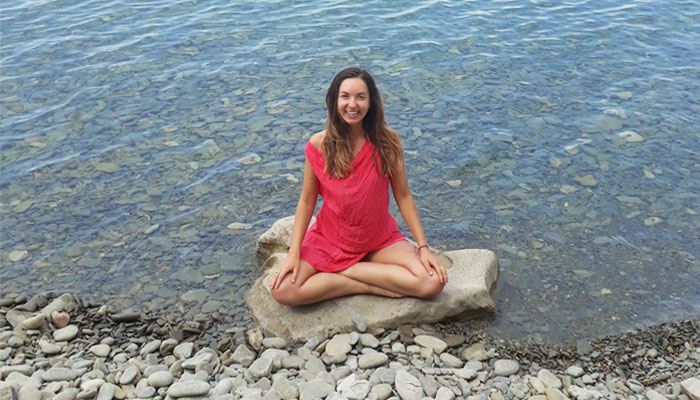Flowing movement, stillness and correct alignment within yoga — what do you prefer?
Playing with boundaries
Yoga, like art likes to play, break and re-shape boundaries continuously. For some, yoga is an applied philosophy, art, way of life, movement practice, psychology, science … Equally, art doesn’t like to be clearly defined.
For many of us who love to be creative and expressive, rigid rules might just seem boring and unnecessary — especially if you’ve been a practitioner of a subject for years. I see this a lot in the yoga world in London. While I teach people of all levels, I predominantly teach one to one and in couples — many are complete beginners.
As I reflect on my own yoga practice, it feels very free and expressive these days. I’m certainly not thinking about correct alignment in any of the poses — just feeling my way intuitively around, and it feels great and effortless to practice in this way. Sometimes I’ll flow from pose to pose, sometimes I’ll hold asanas for long periods of time, but meditation and breathwork will always be a part of my practice.
Originally, however, I was self taught from an Iyengar yoga book, taking yoga one pose at a time. I then turned to Sivananda yoga, which is a set sequence. There wasn’t much flow, creativity or self expression in my practice. However, there is a strong emphasis on meditation. once I’d learnt some sequences and explored the foundation of some of the yoga poses, I was able to get freer with the physical practice.
While creativity, feeling your own way intuitively into movement and self expression are incredibly important, I also think as a yoga teacher I must also be aware that to some people this stuff is just alien. Fair enough if rules get broken later but to start with when you learn any new subject, a few starting rules or areas of focus can help give you a good grounding even if it does feel a bit rigid at first.
The Yin and Yang of movement and stillness
I see yoga as a practice that teaches the relationship between movement and stillness, with meditation being very much at the heart of what yoga is.
During my meditation teacher training I thought a lot about the relationship between movement and stillness. Like Yin and Yang, the two cannot be separated. We can consciously move the body through flowing sequences and find levels of stillness through continuous movement, and we can hold meditative positions or poses for longer periods of time — drawing the awareness inwards, and observing the continuous movement inside.
During my Vipassana course where I meditated for 10 hours a day in total silence for 10 days, I realised how important it is to have some kind of a movement practice in addition to stillness. Despite having a daily yoga practice, my body really ached to begin with. There’s no way I’d be able to go deep into meditation in the long run if I never consciously moved my body. I know there are exceptions and there are stories of people who sit for really extended periods of time in one position. But I have never felt the physical body as a boundary to meditation and Vipassana certainly doesn’t teach this either.
Pratyahara (withdrawing the senses inwards — the fifth limb of yoga)
It’s natural to want to move the body and I can see certainly in London that any yoga practices with ‘flow’ attached are really popular. Sometimes it feels like yoga has been given a heavy dose of speed — practices can be so fast and maybe this just reflects our fast pace of living. However, just like continuous movement, there’s beauty in also watching and tuning into the natural movement that happens inside of us, which in yoga can be called Pratyahara (the fifth limb of yoga) or withdrawing the senses inwards.
Meditation (Dhyana – the seventh limb of yoga)
Meditation is the last point I wanted to talk about because in yoga it can be interpreted as a particular state that is reached once the meditation technique has been dropped. It’s something that happens and can’t really be taught but for me it’s the reason I practice yoga.
Asana, Pranayama, and pratyahara while all beautiful as practices in their own right, are techniques that lead to Dhyana. So, sometimes when I go to yoga classes that are super speedy, I hope practitioners of faster styles, will also discover the beauty of slowing it down a notch and tuning into the possibilities that lie within.
What are your thoughts? Do you prefer to flow? Do you enjoy holding poses for longer? And how important is meditation in your yoga practice?

